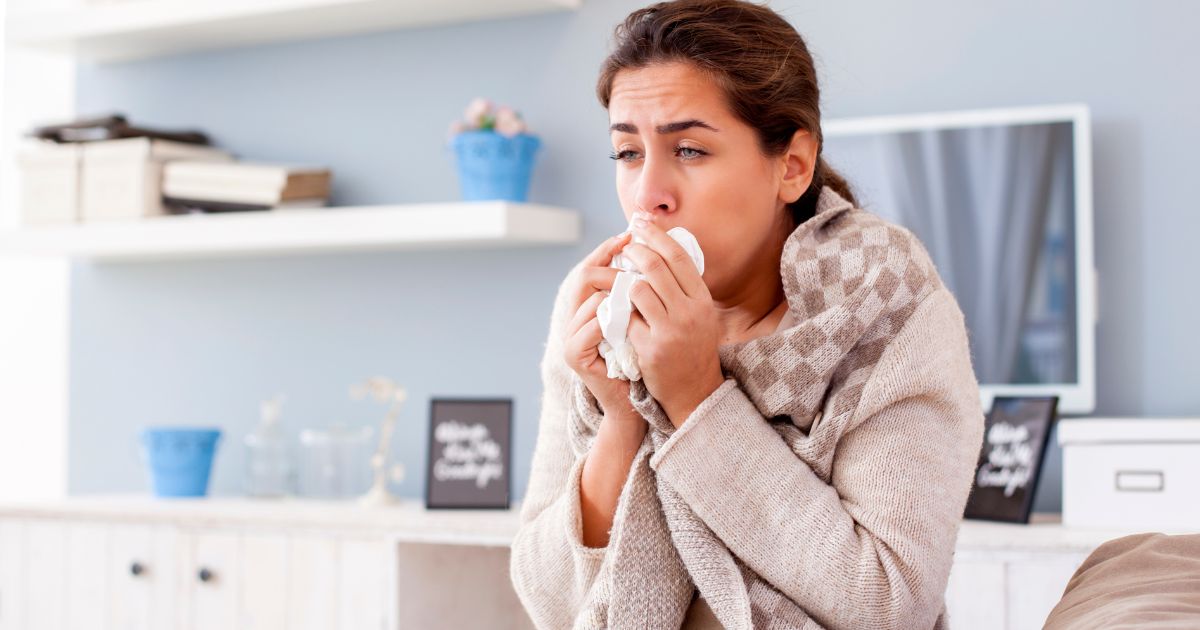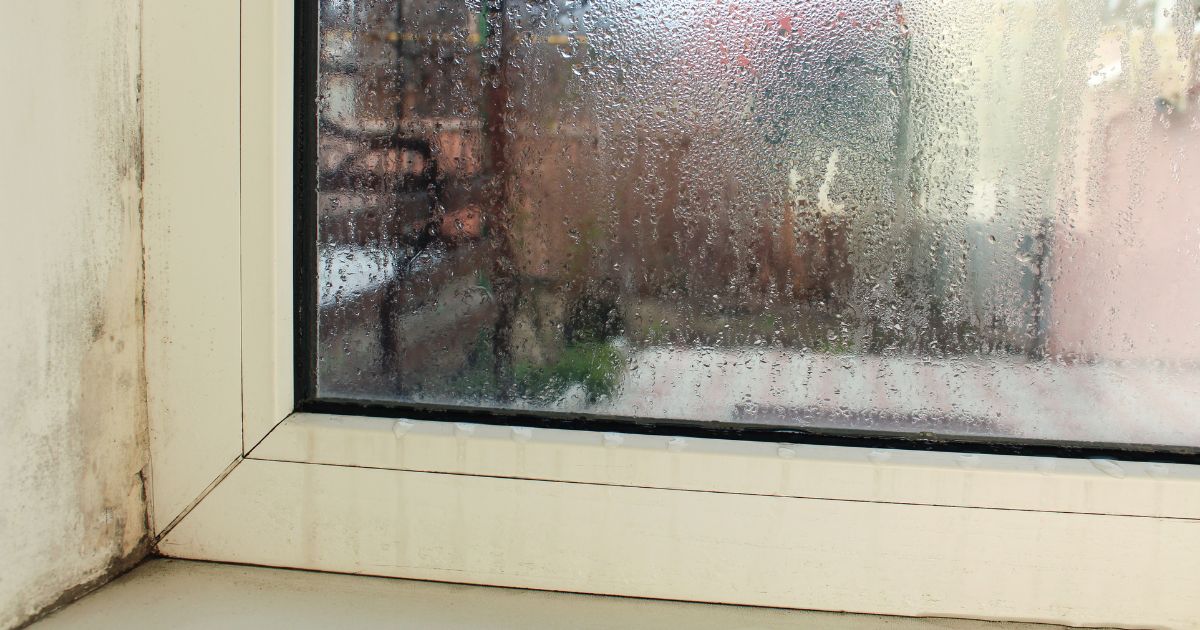In February, there are still no pollen allergies, but allergy sufferers are bothered by mold allergies and allergies to dust mites. February is one of the coldest months in the Europe, people are starting to get tired of the long winter and suffer from a lack of vitamin D. That's why they are more susceptible to colds. Allergies in February can be tricky because they can easily be mistaken for common viral infections. Let's take a look at how to recognize allergies from a common cold and what symptoms are typical for February allergies.

Most Common Allergies in February
As we hinted at the beginning, in February, dust mite and mold allergies dominate because we spend a large part of the day indoors. Additionally, older houses often have a problem with high humidity, which is favored by mold and dust mites.
Dust Mite Allergies
Symptoms of dust mite allergies may include:
- Sneezing,
- irritated eyes,
- stuffy nose or allergic rhinitis,
- itchy nose, eyes, or throat,
- dry cough.
Symptoms may worsen at night because that's when you'll find the most dust mites in bed, possibly even billions.

Tip: Best Eye Drops: For Allergies and Dry Eyes.
How to Deal with Dust Mite Allergies in February
An effective solution against dust mites is anti-dust mite bedding, including pillows, duvets, covers, and bed linen. Other preventive measures include regular cleaning, ventilation, and using air purifiers with HEPA filters. Dust mites thrive best at relative humidity around 70 to 80% and temperatures between 25 and 30°C. Humidity is crucial because dust mites take water from it, which they need to survive. Therefore, it's important to keep the bedroom, where dust mites accumulate the most, cool and reduce the air humidity to below 50%.
Mold Allergies
Allergic reactions to mold are very similar to those to dust mites, including:
- Cough,
- irritated eyes,
- stuffy nose or allergic rhinitis,
- itchy nose, eyes, or throat,
- dry cough.
Molds thrive in warm and humid environments, such as bathrooms and basements, but they can also grow on walls, in closets, or under carpets.

Tip: Nasal Irrigation: How to Properly Rinse Your Nose.
What Helps with Mold Allergies
If you already have visible mold at home, it's necessary to mechanically remove it. Then you need to ensure that no further mold forms. Air disinfection with ozone, using dehumidifiers, and regular ventilation help against molds.
For any respiratory allergy, an air purifier can help. It should have at least a HEPA filter.
How to Recognize Allergies from a Cold
Although it may seem that symptoms of a common cold and allergic reactions are similar, they can be easily distinguished. For example, allergic symptoms in February often escalate with prolonged indoor exposure because the most common allergens in February are dust mites and molds. Dust mite allergy is strongest during the night or early morning because that's when most dust mites are found in bed (in the mattress, pillow, and blanket).
Unlike colds, with allergies, we usually don't see improvement after using common medications for viral infections, and importantly, allergies don't cause fever. Allergic rhinitis is most often mistaken for a cold. That's why you should be aware that a common cold typically lasts a maximum of 10 days. It usually lasts for a shorter period. So, if you suffer from a runny nose for a longer time, you should be cautious. Most likely, you have an allergy.
#produkty#https://www.nanospace.store/drops-and-sprays/
Tip: Allergic Rhinitis: Symptoms and How to Distinguish Hay Fever from Common Cold.
Learn More About Allergies:
FAQ - Frequently Asked Questions
What are the most common allergies in February?
The most common allergies in February are dust mite and mold allergies.
How to distinguish allergies in February from a cold?
Allergy symptoms and cold symptoms may overlap, but allergies usually don't accompany fever, and their symptoms are constant or worsen upon contact with the allergen - usually indoors in February.
Is it possible to have allergic reactions to pollen in February?
In Central Europe, it's not common because nothing blooms, but if you go abroad, it's possible to have allergic reactions to pollen.
Can air purifiers really help with allergies?
Yes, air purifiers, especially with HEPA filters, can be effective in reducing allergen concentrations indoors, such as dust mites, mold spores, and dust.
Sources
- Arlian LG, A. A. (n.d.). Lowering humidity in homes reduces dust mites and their allergens. J Allergy Clin Immunol, 99-104.
- Arlian LG, N. J.-M. (1999). Reducing relative humidity to control the house dust mite Dermatophagoides farinae. J Allergy Clin Immunol, 852-6.
- Ellingson AR, L. D. (1995). The prevalence of Dermatophagoides mite allergen in Colorado homes utilizing central evaporative coolers. Ann Allergy, 680-3.
- R Voorhorst, F. S. (1967). House dust mite atopy and the allergens it produces: identity with the house dust allergen. J Allergy, 325-329.
- RL Brandt, L. A. (1976). Mortality of house dust mites, Dermatophagoides farinae and D. pteronyssinus exposed to dehydrating conditions or selected pesticides. JMed Entomol, 327-352.
- Singh, M., & Jaiswal, N. (2013). Dehumidifiers for chronic asthma. Cochrane Database of Systematic Reviews, 1-25.
- Cheng L, Chen J, Fu Q, et al. Chinese Society of Allergy Guidelines for Diagnosis and Treatment of Allergic Rhinitis. Allergy Asthma Immunol Res. 2018;10(4):300-53.
- Sheehan WJ, Phipatanakul W. Indoor allergen exposure and asthma outcomes. Curr Opin Pediatr. 2016;28(6):772–7.
- Twaroch, T.E., Curin, M., Valenta, R. and Swoboda, I., 2015. Mold allergens in respiratory allergy: from structure to therapy. Allergy, asthma & immunology research, 7(3), pp.205-220.
- Bozek, A. and Pyrkosz, K., 2017. Immunotherapy of mold allergy: A review. Human vaccines & immunotherapeutics, 13(10), pp.2397-2401.
- Portnoy, J.M. and Jara, D., 2015. Mold allergy revisited. Annals of Allergy, Asthma & Immunology, 114(2), pp.83-89.
- Rudert, A. and Portnoy, J., 2017. Mold allergy: is it real and what do we do about it?. Expert Review of Clinical Immunology, 13(8), pp.823-835.

